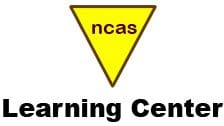What is the SSAT?
The Secondary School Admission Test (SSAT) consists of two parts: a brief essay and a multiple-choice aptitude test, which measures a student's ability to solve mathematics problems, use language, and comprehend what is read.
The test is administered on two levels:
Lower (for students currently in grades 5-7)
Upper (for students currently in grades 8-11)


SSAT Test Format
The test is divided into five sections. There is a 25-minute writing sample, a 40-minute reading section (40 questions based on about 7 reading passages), and 30 minutes each for the remaining multiple-choice sections. There are two sections of Math comprising 25 questions each, while the verbal section consists of 30 synonym and 30 analogy questions. The writing sample is not included in the report sent to students. All questions on the SSAT are equal in value, and scores are based on the number of questions answered correctly, minus one-quarter point for each question answered incorrectly. Although no points are awarded or deducted for questions left unanswered, students are penalized for questions answered incorrectly or with more than one response.
What is the ISEE?
The Independent School Entrance Examination (ISEE) is a three-hour admission test for entrance into grades five through twelve.
The test has three levels:
- A Lower Level for students in grades four and five who are candidates for admission to grades five and six,
- A Middle Level for students in grades six and seven who are candidates for admission to grades seven and eight
- An Upper Level for students in grades eight to eleven who are candidates for admission to grades nine through twelve.
ISEE Test Format
The ISEE consists of verbal and quantitative reasoning tests that measure a student's capability for learning and reading comprehension and mathematics achievement tests that provide specific information about an individual's strengths and weaknesses in those areas. All levels include a timed essay written in response to an assigned topic. The essay is not scored, but a copy is forwarded to the recipient schools along with the Individual Student Report, which shows scaled scores, percentiles, and stanines. The ISEE may only be taken once within a six-month period, and it must be taken for admission to a school, not as a practice test.


What is the HSPT?
The HSPT, or High School Placement Test, is used by many Catholic schools as a tool to compare applicants from diverse middle schools. The HSPT, unlike the ISEE and SSAT, is given by individual schools and is generally taken at the school to which a student is applying.
HSPT Test Format
The HSPT has five multiple-choice sections: a 60-question, 16-minute Verbal Skills section; a 52-question, 30-minute Quantitative Skills section; a 62-question, 25-minute Reading section; a 64-question, 45-minute Mathematics section; and a 60-question, 25-minute Language section.
The verbal skills section incorporates synonyms, antonyms, analogies, logic, and verbal classification questions. The quantitative skills section includes series, geometric comparisons, non-geometric comparisons, and number manipulations. The reading section comprises questions on short passages on a variety of topics. The mathematics section includes mathematical concepts and problem-solving, covering arithmetic, elementary algebra, and basic geometry. The language section tests capitalization, punctuation, usage, spelling, and composition.
Our Program
Sessions to prepare students for the SSAT/ISEE.HSPT starts in October and meets once a week for 3 hours – one-and-a-half-hour Verbal and one-and-a-half-hour math session – and is designed for students to take the standardized tests in December.
Classes are small-group sessions, and students are arranged into sessions according to their strengths and weaknesses. For the Verbal prep, students learn 50-70 vocabulary words each week in order to prepare them better for answering the Synonym and Analogies portion of the test and are also taught specific reading strategies in order to help them ace the reading portions of the test.
In math, students cover all the units that will be tested under these tests, and students also learn specific skills of how to understand the questions, break them down, and then attempt to solve them.
Teachers teaching the classes are experts at teaching test prep and have over fifteen years of experience teaching such classes.

